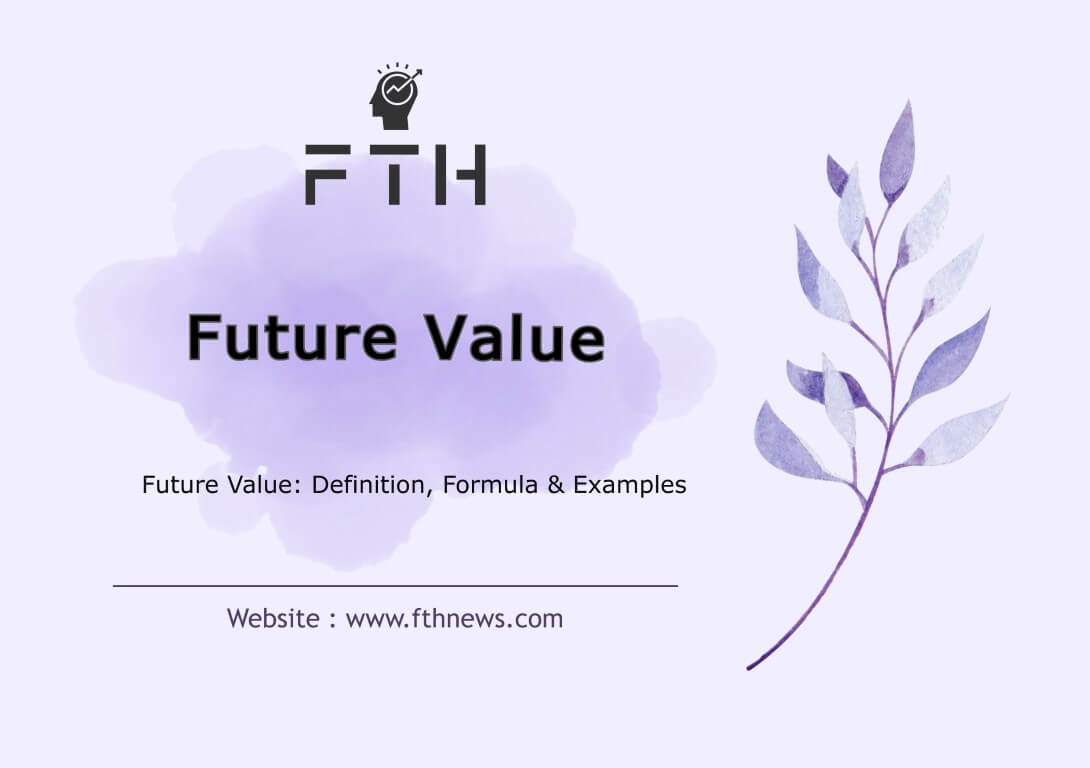
Future Value: Definition, Formula & Examples
Future Value is a potent tool that enables investors to sculpt their financial destiny. It holds the key to unlocking the latent potential within investments, allowing you to harness the power of compounding and strategic planning.
As we delve into this exploration of Future Value, we’ll navigate through its definition, formulae, and practical applications. Join us in unraveling the enigma of (FV) and discover how this financial force can elevate your wealth management game.
What is Future Value (FV)?
(FV) is a financial concept that holds the key to estimating the worth of a current asset at a specific future date based on an assumed growth rate. Investors and financial planners heavily rely on FV to project how much an investment made today will appreciate over time.
Knowledge of future value empowers investors to make well-informed decisions based on their anticipated needs. It’s worth noting that external economic factors, like inflation, can adversely impact the (FV) of an asset by diminishing its worth.
Understanding the Future Value
To comprehend the future value of money, consider a fundamental principle: a dollar today holds more value than a dollar in the future. This is because investing a dollar today allows it to grow with a specific rate of return over time. Even though you cannot spend the dollar you’ll receive tomorrow, it lacks the potential for growth.
So, what is the (FV) of money?
The (FV) of money is the total amount invested today, set to increase at the end of a specific period with a designated interest rate. For instance, if you invest $1,000 today at an annual interest rate of 2%, it will be worth $1,020 after one year. Therefore, the (FV) of $1,000 today is $1,020. In essence, purchasing a consumer product for $1,000 implies paying $1,020 when factoring in its (FV) after a year.
Now, consider a two-year investment of $1,000 at a 2% interest rate. At the end of the first year, your investment will be $1,020. However, at the beginning of the second year, your initial investment is $1,020, not $1,000. Consequently, at the end of the second year, its value will be 2% of $1,020, totaling $1,044. Compound interest, if reinvested, contributes to this growth, compounding the overall value.
Importance of Future Value:
Understanding the future value of an investment is crucial for making informed financial decisions. Investors utilize FV to anticipate the growth potential of their investments and align them with their financial goals. However, it’s essential to acknowledge the impact of external factors, such as inflation, which can erode the (FV) of assets.
Factors Affecting Future Value:
Factors Affecting (FV):
- Inflation: Acknowledging the impact of inflation on the purchasing power of money is crucial. Adjusting (FV) calculations for inflation provides a more realistic projection.
- Market Conditions: The unpredictability of markets introduces an element of uncertainty. (FV) projections should account for potential market fluctuations and adaptability.
- Tax Implications: Understanding the tax implications on investment returns is vital for accurate (FV) assessments. Tax efficiency can significantly influence the net (FV) of an investment.
- Technology and Innovation: In the era of rapid technological advancement, considering the impact of innovation on the (FV) of investments adds another layer of complexity to financial planning.
Types of Future Value (FV):
- Simple Interest:
- Simple interest reflects the future value of a lump sum, where interest accumulates solely on the initial investment.
- Compound Interest:
- Compound interest, a more dynamic approach, earns interest not only on the initial investment but also on the accrued interest. This results in a higher account balance compared to simple interest.
- Annuity:
- Future value takes on a different form with annuities, accruing over time through a series of payments. An ordinary annuity involves payments at the end of a period, while an annuity due entails payments at the beginning of a recurring period.
Future Value vs. Present Value:
While (FV) looks forward, present value gauges the worth of a future asset in today’s terms. Both concepts are interconnected, relying on financial principles such as discount or growth rates, compounding periods, and initial investments.
Future Value Formula (FV):
At the heart of financial foresight lies the (FV) formula, a powerful tool that illuminates the worth of an investment at a future point in time. Unveiling the (FV) involves a simple yet impactful calculation:
(FV)=PV×(1+r)n
Where:
- PV: Present Value
- r: Interest Rate (%)
- n: Number of Compounding Periods
Calculating Future Value:
- For Simple Annual Interest:FV=PV×(1+(R×T))
- Where PV is the present value, R is the simple interest rate, and T is the number of years.
- For Compounded Annual Interest: FV=PV×(1+R) T
- Where PV is the present value, R is the compounded interest rate, and T is the number of years.
These formulas allow investors to calculate the (FV) of their investments, considering simple or compound interest rates and the time horizon.
here are two methods for calculating (FV):
- For an asset with a simple annual interest rate: (FV) = [(number of years * interest rate) + 1] * asset value at the present time.
- For an asset with an annual compound interest rate: (FV) = [number of years^(interest rate + 1)] * asset value at the present time.
How Compounding Frequency Impacts (FV):
The cadence of compounding, a crucial factor in the (FV) equation, is determined by the compounding frequency. The correlation is straightforward – more compounding periods equate to a more substantial (FV). Consider the compounding frequencies:
- Annual Compounding (1x)
- Semi-Annual Compounding (2x)
- Quarterly Compounding (4x)
- Monthly Compounding (12x)
- Daily Compounding (365x)
Pros and Cons of Future Value:
Advantages:
- (FV) facilitates effective financial planning, helping individuals and companies understand their financial positions and plan for future goals.
- It simplifies comparisons between different investment options, enabling investors to make informed decisions.
- (FV) calculations are relatively straightforward, relying on estimates rather than complex numerical data.
Disadvantages:
- (FV) often assumes constant growth, which may not accurately represent the real-world scenario.
- Assumptions made in (FV) calculations may not materialize, making the projections unreliable.
- (FV) alone may not be sufficient for comparing two mutually exclusive projects, as it overlooks the starting point of the initial investment.
Example Scenarios:
- Failure to File Penalty: A taxpayer facing a 5% penalty for late filing can calculate the (FV) of their tax obligation, providing insights into the potential growth of their liability.
- Zero-Coupon Bond: An investor holding a zero-coupon bond at a discount can estimate its (FV) based on the current variables, offering a glimpse into the bond’s potential worth in the future.
Conclusion:
For those delving into the intricate world of finance, understanding Future Value is paramount. This comprehensive guide demystifies the concept, offering insights into its calculation methods, importance, and potential advantages and pitfalls.
In conclusion, Future Value serves as a vital tool in financial planning and decision-making. Whether you’re an investor looking to assess the potential growth of your portfolio or a financial planner aiming to guide clients toward sound investments, a solid grasp of (FV) is indispensable. As the financial landscape evolves, the ability to predict the (FV) of assets becomes an invaluable skill for navigating the complexities of the market.
This guide is designed to empower you with the knowledge needed to unlock the potential of (FV), enabling you to make informed decisions and navigate the dynamic world of finance with confidence.
FAQ
(FV) = $1000 * (1 + 0.08)^5 = $1481.66
(FV) = Present Value (PV) * (1 + interest rate)^number of periods
Present Value (PV) = (FV) / (1 + interest rate)^number of periods
(FV) estimates the value of an investment in the future, while Present Value (PV) calculates what a (FV)e is worth today.
Use Present Value when you want to determine the current worth of a (FV) and (FV) when projecting the future worth of an investment.
Present Value is worth more because it considers the time value of money, reflecting that a sum of money today is more valuable than the same sum in the future.
Present Value is typically smaller than (FV) due to the impact of discounting for the time value of money.
No, present value is generally lower than (FV) due to the discounted nature of future cash flows.
Money is worth less in the future due to factors like inflation, opportunity cost, and the uncertainty of future events affecting its purchasing power.














